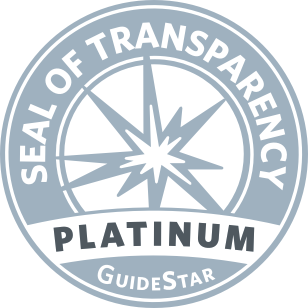Tips to Help You Enjoy Your Time Away
Gastroparesis is a disorder in which the stomach empties too slowly, causing nausea, vomiting, pain, bloating, fullness, and/or reflux. There are very few effective treatments for the condition, so most patients rely on careful adherence to dietary and lifestyle modifications to minimize symptoms.
While managing gastroparesis at home can be difficult, traveling poses an even greater challenge. With the right preparation, however, it is possible to enjoy time away with family and friends without compromising symptom management.
Before You Go
- Be sure to take your needs into account when making travel arrangements.
- If you’ll be staying in a hotel, request a room with a small refrigerator or kitchenette. This gives you the flexibility to store and/or prepare some of your own food.
- If you’ll be staying with friends or family, inform them of your medical condition and consequent dietary restrictions. Either provide a detailed list of what you can and cannot eat or let them know that you will be bringing and preparing your own food.
- If you’ll be traveling by air and will need to bring liquid meal replacements or medication on board your flight, contact the TSA at 866-289-9673 to make special arrangements. If you have the Enterra gastric neurostimulator, be sure to pack the device identification card in your carry-on luggage so that you can present it at all security check points.
- Keep an on-going list of gastroparesis-friendly foods that you know you can safely eat. This will come in handy when dining away from home.
- Pack nutrient-dense, portable snacks for travel days and an ample amount of gastroparesis-friendly staples for the duration of your trip.
- Pack all medications, supplements, remedies, and symptom management tools that you use at home, both on a regular and as-needed or emergency basis.
- If you rely on smoothies, purees, or protein shakes as part of your daily diet, invest in a portable blender to use when you reach your destination.
Travel Day
- Regardless of how you’re traveling, bring your own food and pack twice as much you think you’ll need. Delays are unpredictable and you can never be sure there will be gastroparesis-friendly options along the way.
- You may find that you’re more prone to motion sickness than you were prior to having gastroparesis. Have a variety of nausea remedies on hand, just in case.
- Follow your typical meal plan as closely as possible. Rather than snacking all day, which is likely to provide little nutrition and leave you feeling full but unsatisfied, eat well-balanced mini-meals at regular intervals.
- Eat mindfully and in a relaxed environment – not in the car or while walking through the airport. Take a few breaths to relax before you start eating and chew your food thoroughly to help facilitate digestion.
Once You Arrive
- Continue to follow your regular schedule, both in terms of diet and lifestyle activities. For example, if you typically practice yoga or relaxation exercises in the morning, plan that into your daily routine.
- Maximize nutrition in every bite and sip you take. This is not the time to consume empty foods that fill you up without providing any nutrients. Without proper nutrition, you’re less likely to have the energy to fully enjoy your vacation.
- Experiment carefully and deliberately. If you’re going to try something you wouldn’t ordinarily eat at home, don’t do it impulsively. Be sure you have the time and flexibility to relax afterward should you feel sick.
- Find ways to indulge that do not include food, such as treating yourself to a spa service or buying a special souvenir.
- Be active, especially after meals. Many people find that walking helps to alleviate symptoms and improve digestion. It’s also a great way to explore your vacation destination!
- Drink plenty of water, especially if you’re traveling by air, vacationing somewhere warm, and/or engaging in physical activity. In addition to causing headaches and dizziness, dehydration can exacerbate symptoms of nausea and vomiting.
- Respect your limitations and allow yourself to rest if you feel tired or symptomatic.
- Have fun! While the demands of managing gastroparesis can seem overwhelming, especially while on vacation, adhering to these tips will allow you to more fully enjoy your time away.
Quick Tips
What does Gastroparesis-Friendly mean?
A food can generally be considered “gastroparesis-friendly” if:
- It’s low in fat
- It’s low in fiber
- It doesn’t contain any nuts, seeds, skins, hulls, peels, or other indigestible parts
Anything that meets these criteria is unlikely to cause complications. However, individual tolerances vary greatly. Not all gastroparesis-friendly foods are well-tolerated by all gastroparesis patients. Likewise, some gastroparesis patients tolerate foods that are not technically gastroparesis-friendly. Careful experimentation is the key to figuring out what works best for you.
Packable Gastroparesis-Friendly Foods
- Orgain (no refrigeration needed; pour over ice when ready to drink)
- Almond Butter Carob MacroBars
- PB2: Powdered Peanut Butter (stir into non-fat or low-fat yogurt for added protein and nutrients)
- Individual packets of instant Cream of Wheat (make with water or skim milk; add a small sliced or mashed banana and a tablespoon of PB2 or creamy peanut butter)
- Low-fiber cereal, such as Rice Krispies, Corn Flakes, or Special K (add skim, soy, rice or almond milk)
- Low-fiber crackers or low-fat graham crackers (spread with nut butter)
- Individual serving size packets of creamy peanut butter or smooth almond butter (spread on toast, English muffins, or bagels)
- Individual servings of applesauce, canned peaches or pears (stir into low-fat cottage cheese, Greek yogurt or non-dairy yogurt)
Nausea Remedies
- Ginger is a long-trusted natural remedy for nausea, which may also stimulate gastric emptying. Gin-Gins Boost candies from The Ginger People contain 30% fresh ginger and are easy to carry in your purse or pocket.
- Nauzene is an anti-nausea and anti-acid medication that’s available over-the-counter as cherry-flavored chewable tablets.
- QueaseEASE is an aromatic inhaler with a blend of lavender, peppermint, ginger, and spearmint oils, which together help to alleviate nausea. It’s portable, non-drowsy and drug-free.
Crystal Zaborowski Saltrelli is a Certified Health Counselor specializing in gastroparesis management and one of very few health professionals with both personal and professional experience with the condition. She is the author of the book, Eating for Gastroparesis: Guidelines, Tips & Recipes and maintains a website at IFFGD Publication: Traveling with Gastroparesis.
Adapted from IFFGD Publication Traveling with Gastroparesis by Crystal Zaborowski Saltrelli, CHC, Rochester, NY.










